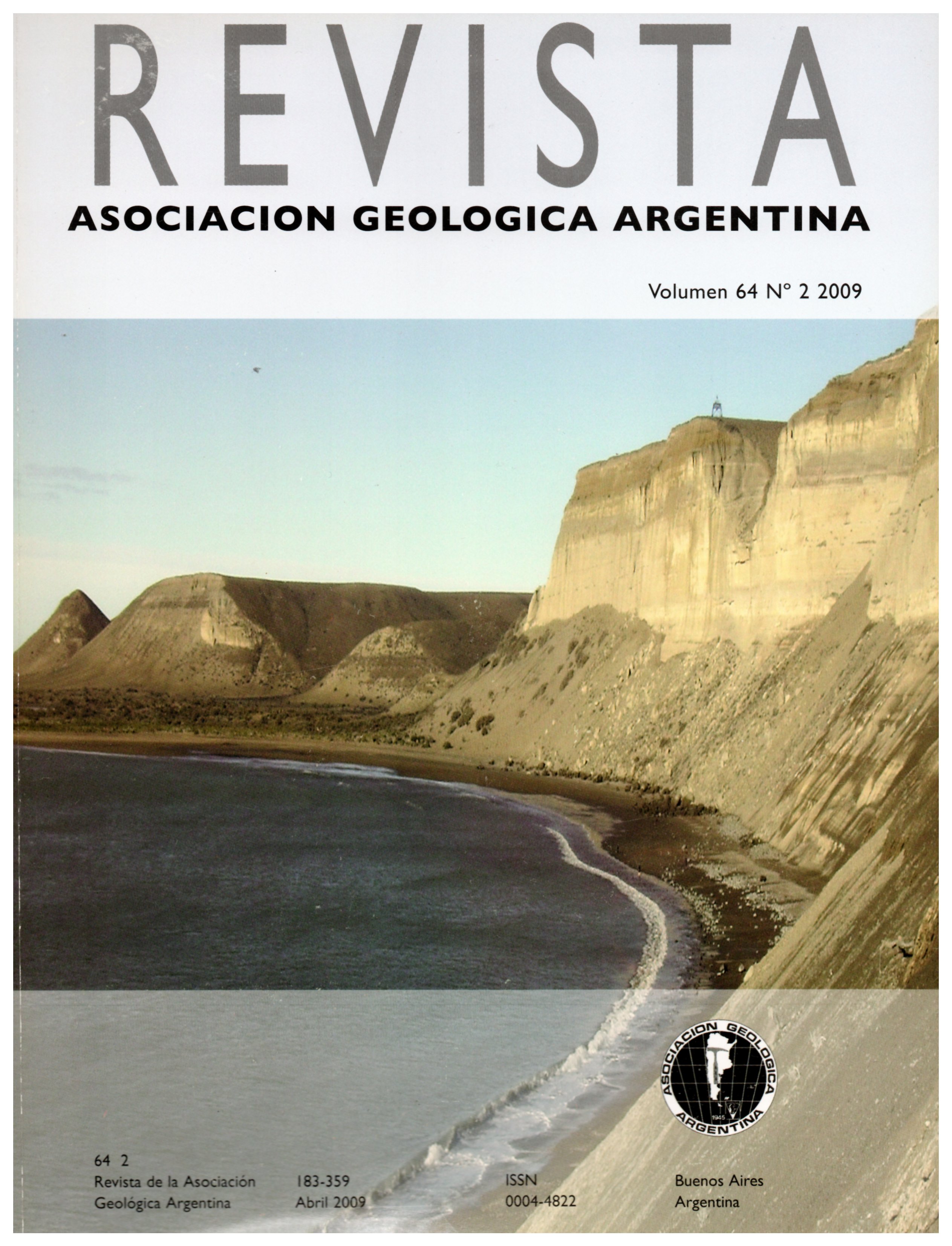Upper Oligocene-Lower Miocene volcanism of Doña Ana Group in the High Cordillera of San Juan
Main Article Content
Abstract
A detail study of the main lithologic and petrographic features of recently identified outcrops of Doña Ana Group are presented in this paper; outcrops which are located nearby the Cordillera del Zancarrón, in the Valle del Cura region, in the high cordillera of San Juan. This unit includes two members that show a contrasting composition. Tillito Formation is formed by dacitic to rhyolitic crystalline and vitreous tuffs, interbedded with mesosilicic lavas and volcanic breccias. Escabroso Formation includes basandesitic lava flows, some of them more silicic in composition, volcanic breccias and vitreous tuffs. In the lavas and tuffs of both units, strong evidence of corrosion are seen in plagioclase and mafic minerals phenocrysts, which evidence disequilibrium processes that took place in the magmatic chambers. Two new radiometric ages, one K/Ar of 25,0 ± 0,7 Ma and one Ar/Ar of 22,9 ± 0,7 Ma, confirm the assignment of the described deposits to the Doña Ana Group of Upper Oligocene-Lower Miocene age. Mineralogical and textural features of the unit represent the evolution of a volcanic arc; this arc correspond to the one developed along the Andean margin since Upper Oligocene. The reconnaissance of these outcrops is of particular interest in order to precise the mapping of Valle del Cura region, especially because of the relationship of Doña Ana Group deposits with hidrotermal altered areas with associated mineralization.
Article Details

This work is licensed under a Creative Commons Attribution-NonCommercial 4.0 International License.
Nota de copyright
Los autores conservan los derechos de autor y garantizan a la revista el derecho de ser la primera publicación del trabajo licenciado según una licencia de atribución Creative Commons que permite a otros compartir el trabajo con el reconocimiento de la autoría y de la publicación en la que se publicó por primera vez.
Declaración de privacidad
Los nombres y direcciones de correo electrónico introducidos en esta revista se usarán exclusivamente para los fines declarados por esta revista y no estarán disponibles para ningún otro propósito u otra persona.

